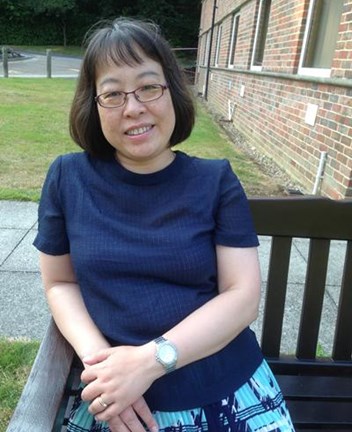The LRF doctoral student will conduct a collaborative project between research groups at the University of Michigan (UM) and the University of Southampton (UOS) to study nanostructuring of wide-bandgap (WBG) SiC, and application to electronic devices capable of operating under harsh environments (resistant to high-temperature, corrosion, mechanical stress, background radiation). A new approach for localized control of electrical charge transport in SiC is proposed based on non-thermal nanostructuring on ultrafast (femtosecond) time scales. Such materials modifications are anticipated to provide both breakthrough technologies for SiC electronics, and a new enabling technology for realizing resistive memory devices (RRAM). Localized structural transitions may be achieved via irradiation with an ultrafast laser. Femtosecond laser pulses are capable of producing a high-density electron-hole plasma, band-gap “collapse”, and non-thermal (or cold) melting. This phenomenon has been demonstrated in several semiconductor systems, including Si, GaAs, and ZnSe. Recent work at the University of Michigan has demonstrated the formation of both nanodots and periodic surface structures in GaAs and ZnSe using this approach. Similar preliminary studies on SiC have demonstrated an increase in material conductivity by 5 orders of magnitude by ultrafast laser irradiation in the presence of nitrogen. The conductivity increase is attributed to laser induced doping in SiC, without any thermal treatment. This is a remarkable feat considering that nitrogen dopant activation in SiC typically requires a thermal annealing treatment at 1600 degrees Celsius. This approach therefore appears to be highly suitable for achieving localized structural transitions and modulation of electronic properties, without the requirement for high thermal treatments of the surrounding bulk material/system. In this project, localized structural modifications of SiC via femtosecond laser irradiation will be studied at the nanoscale. The resulting structural, chemical, and electronic property modifications will be studied for pure single-crystal material and in the presence of varying dopant species. The physical mechanisms and ability to control structural modifications will be studied and applied to electronic devices. Intentional and localized structural and electronic modifications will be applied as a non-conventional means to improve existing SiC electronics technology, as well as to filament formation for emerging devices such as SiC RRAM.

Kees is Professor of Nano-electronics, manager of the electronics characterisation labs, and a director of ECS Partners Ltd. He is a world-leading expert in the integration of novel nano-materials with silicon electronics processing. Pushing the boundaries of e-beam lithography and helium ion milling to create functional materials, devices, and circuits underpins much of his research, resulting in phase change memory, and thermo-electric, spintronic and plasmonic devices with sub-10 nm features.

Professor Liudi Jiang is Professor of Materials and Electromechanical Systems within Engineering and the Environment at the University of Southampton.
Liudi currently leads a research group of 7 PhD students and 3 postdoctoral fellows with research projects spanning multidisciplinary areas of electromechanical sensors/actuators, functional materials and intelligent systems for many applications including e.g. biomedical, smart body interface, intelligent sensor/actuator systems, gait biomechanics, micro/nanoelectromechanical systems, and energy harvesting.
“It’s important for research to have a broad view, for me the excitement comes from engineering advanced materials, devices and intelligent systems for new technologies which address unmet application needs.”